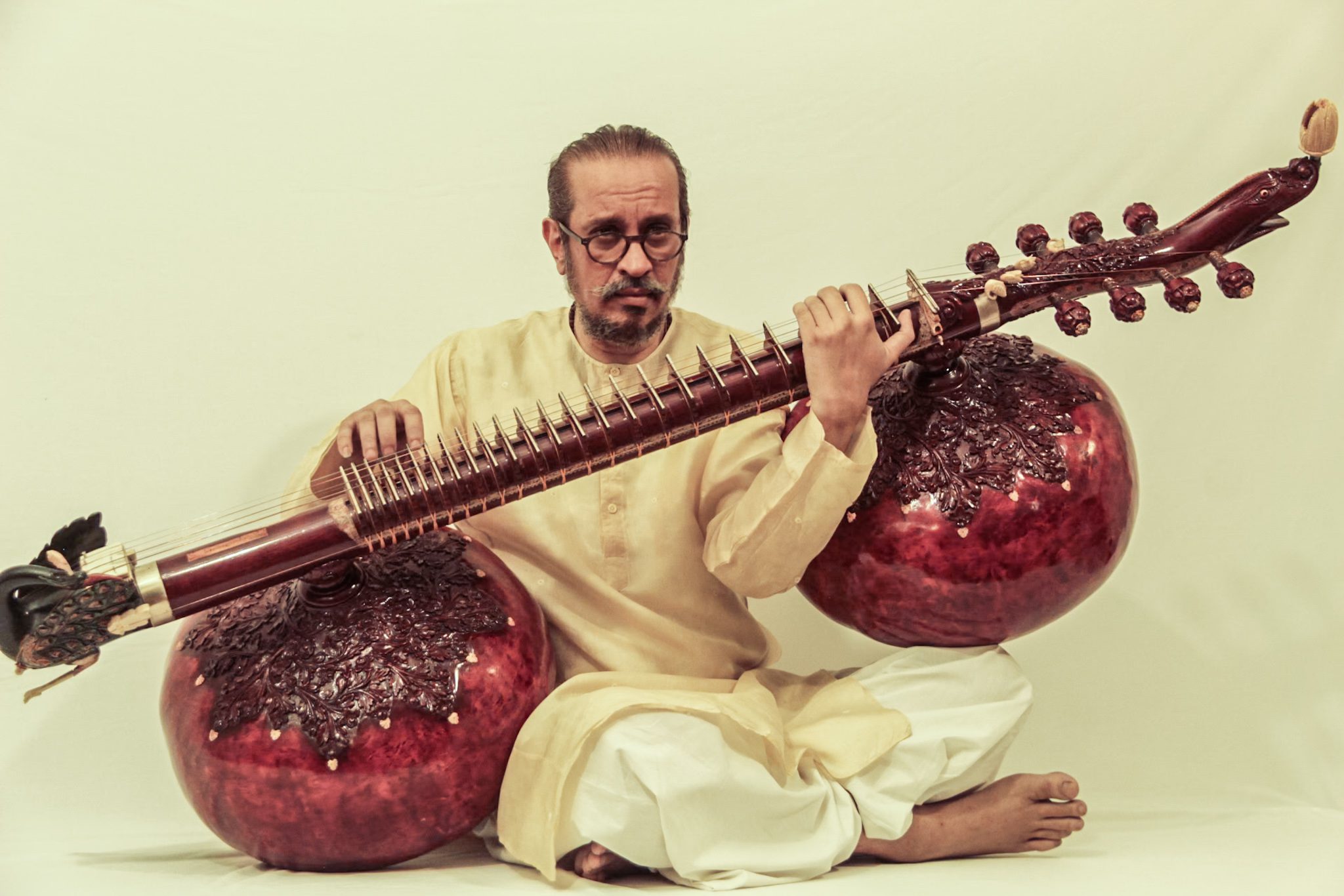
The Mittal Institute is pleased to welcome Distinguished Artist in Residence Ustad Bahauddin Dagar, a renowned rudra veena player. Dagar hails from a long tradition of Indian classical music, especially the genre Dhrupad. In 2012, the Government of India bestowed on him the country’s highest award for performing artists, the Sangeet Natak Akademi Award.
During his residency, Dagar will perform a Dhrupad concert on Thursday, October 17, as part of ArtsThursdays, a university-wide initiative supported by Harvard University Committee on the Arts (HUCA). He will also speak in two of Prof. Richard Wolf’s classes: “Music in Islamic Contexts” and “South Asian Music.” Students and others will also have a chance to interact with the distinguished musician at an interactive workshop on Dhrupad Style on Friday, October 18.
Ahead of his visit, we spoke with Ustad Bahauddin Dagar about how to balance tradition and artistic freedom, the peculiarities of the rudra veena, and what attendees can expect from his performance on Oct. 17.
Mittal Institute: For those unfamiliar with your work, can you share a little about your journey with the rudra veena and the Dhrupad tradition?
Bahauddin Dagar: The Dhrupad tradition came into being about a thousand years ago and is the oldest classical music alive in India. The form works within a framework, and there are various traditions or vanis under this framework, such as Dagar, Darbhanga, Vishnupur, Bettiah, and Talwandi. In its early forms, Dhrupad was sung in Sanskrit. Later on, the vernacular language ‘Braj’ was used to accommodate abstraction and innovation. Dhrupad is an interplay of three components: the aalaap, which are single syllables used to create simple, compound, and complex patterns; the raagaa, a melodic framework; and pure improvisation.
Mittal Institute: Your family has played an integral role in preserving the Dhrupad tradition. How do you bring in your own individuality without breaking the tradition?
Bahauddin Dagar: My family has been within this tradition for the last 20 generations and has produced many able students over the centuries keeping this form alive. The form itself seeks to create newer expressions. The solution or the path lies within the teaching: Students are taught phrases that are like seeds. The seeds carry the potential to grow into a tree, provided the students follow the methods sincerely. So, each generation can belong to its roots and, at the same time, branch out with newer artistic expressions. Thus, it’s possible to keep a lineage alive while at the same time adding something new to the form.
Mittal Institute: The rudra veena is a complex and meditative instrument, often described as deeply spiritual. How do you incorporate this spiritual nature into your music?
Bahauddin Dagar: In my opinion, the rudra veena is a very simple instrument and it is the simplicity that gives us a palette to rediscover the new and the complex. The veena has been mentioned as the ‘Yantra’ in the old texts, an instrument that can provide precise measure as feedback to the performer. I believe that spirituality is never directly related to the art form. Instead, spirituality is self-practice and awareness, and any art form or work can be its vehicle.
Mittal Institute: What do you hope the audience takes away from your Oct. 17 performance?
Bahauddin Dagar: I have no expectations from anyone ever. I am always already thinking about a few ideas, not necessarily the same ideas that you might have. And if you are present with me at that moment, I may be able to lead you on a journey through my ideas.
Mittal Institute: As classical Indian music continues to evolve in contemporary settings, how do you see Dhrupad and the rudra veena adapting to modern audiences and venues?
Bahauddin Dagar: The fact that classical music is still being performed means that it is contemporary in nature. Every generation has a thirst for the new while seeking the ancient as a point of reference. As long as we, as musicians, are creating the new, there will always be an interest and dialogue, and sharing shall continue. The instrument is timeless and will continue to engage and converse with the newest trends.
The fact that classical music is still being performed means that it is contemporary in nature. (…) The [rudra veena] is timeless and will continue to engage and converse with the newest trends.
☆ The views represented herein are those of the interview subject and do not necessarily reflect the views of the Mittal Institute, its staff, or its steering committee.
